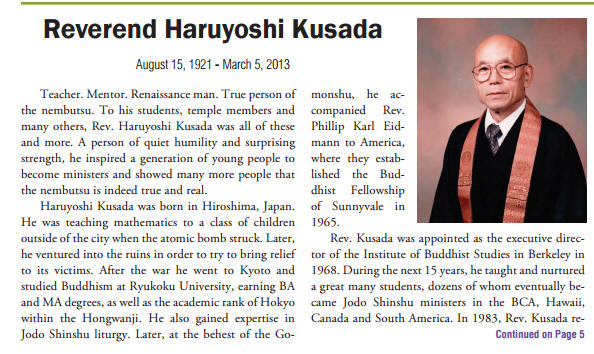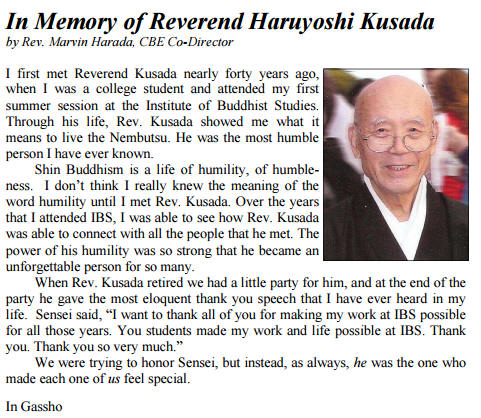With Haruyoshi Kusada and Ken Kaji - by DC
This conversation was with Haruyoshi Kusada Sensei, an 84 year old Japanese Jodo Shinshu priest whom Taigen Dan Leighton introduced me to at Tassajara. Taigen said that Kusada was a most highly respected priest. He was with a Japanese American named Ken Kaji who also had comments.
John Sumser had driven my son Clay and me in. We'd just done a tour of the Hearst Mansion and driven up through Big Sur to Tassajara. John and I sat with Kusada and Kaji at an outside table in the courtyard.
Kusada came to the US in 1961 and met Shunryu Suzuki now and then at Japanese American festivities. The first time was at a conference at Asilimar in Monterey County. "Ichigo ichie – one meeting – whoever you meet it might be the only time."
But that one meeting was enough Kusada said to know Shunryu Suzuki's heart. He praised Suzuki's dignity, composure, and single-minded dedication to establishing Buddhism in the West.
Ken said, "He had charisma that would penetrate the crap. That's why so many were attracted to him."
Kusada told us briefly that he was born in Hiroshima, was sent back home by the army because he was too weak. He became a math teacher. He was teaching a class in a village outside Hiroshima on August 6th, 1945 when the atomic bomb was dropped. He saw the white smoke mushroom cloud rising above the city. Went into the city to help and was assigned to walk around and count survivors and report on what they needed. Worked with food rationing. There was enough rice for each person to have two and a half cups a day at the beginning of the war. There was hardly anything toward the end and especially at Hiroshima. After working to help survivors in Hiroshima he walked to Nagasaki and helped out there. He suffered radiation sickness but it didn't kill him like so many others.
I don't see this anywhere else where his story is told, but as I remember it, he talked about going to Nagasaki as well. I thought he'd said he walked there and was approaching the city just before the bomb dropped. But I just can't believe that's right now. Maybe he went there to help out as well and I just got that other impression.
Together the four of us walked up the Hogback to the stupa and stone for Shunryu Suzuki, offered incense, and Kusada chanted.
John Sumser said it was the most moving story he'd ever heard. I just sent him an email and he responded, "I only vaguely recall meeting Kusada. What I recall is the enormous black wave of sadness that passed through him as he talked about Hiroshima. I cry more easily today than I did then. But, I recall my tears and the way my heart absorbed his story. Later, when we walked where the stupas are - it's a place that feels like the end of life. On reflection, maybe my job was to carry a tiny bit of his sadness back there for deposit."
Kusada specialized in teaching Japanese Buddhist language and ritual to students at Institute of Buddhist Studies in Berkeley which grew out of the early Buddhist Studies Center. When he'd arrived there was no building yet. Students would gather on Sunday evenings for his classes on Buddhism. There was very little money but little by little things developed. Alan Watts, Alan Ginsberg, Jack Kerouac, and Gary Snyder attended lectures and classes there. The institute sent students to Japan, got connected to the GTU, the Graduate Theological Union in Berkeley. Kusada was also an Aikido master.
Kaji said, "I respect him very much. He had a very kind feeling. Rev. Kusada taught a whole generation of teachers. He included basketball for them. They’re now in key positions. A few years ago he went back for advanced ritual training at Nishihonganji (one of two head Jodo Shinshu temples in Kyoto), to catch up with ritual changes."
Wheel of Dharma (Official publication of the BCA) Vol 39, March 213


